Unattended AI Programming: My Experience Using GitHub Copilot Agent for Content Migration
Introduction
Recently, I successfully used GitHub Copilot Agent to migrate all my archived markdown articles to this Docusaurus-based blog, and the experience was surprisingly smooth and efficient. What impressed me most wasn't just the AI's ability to handle repetitive tasks, but also how I could guide it to work autonomously while I focused on higher-level decisions. Even more fascinating was that I could review and guide the AI agent's work using my phone during commutes or breaks. This experience fundamentally changed my perspective on AI-assisted development workflows.
Here's a showcase of the bilingual blog after migration completion:
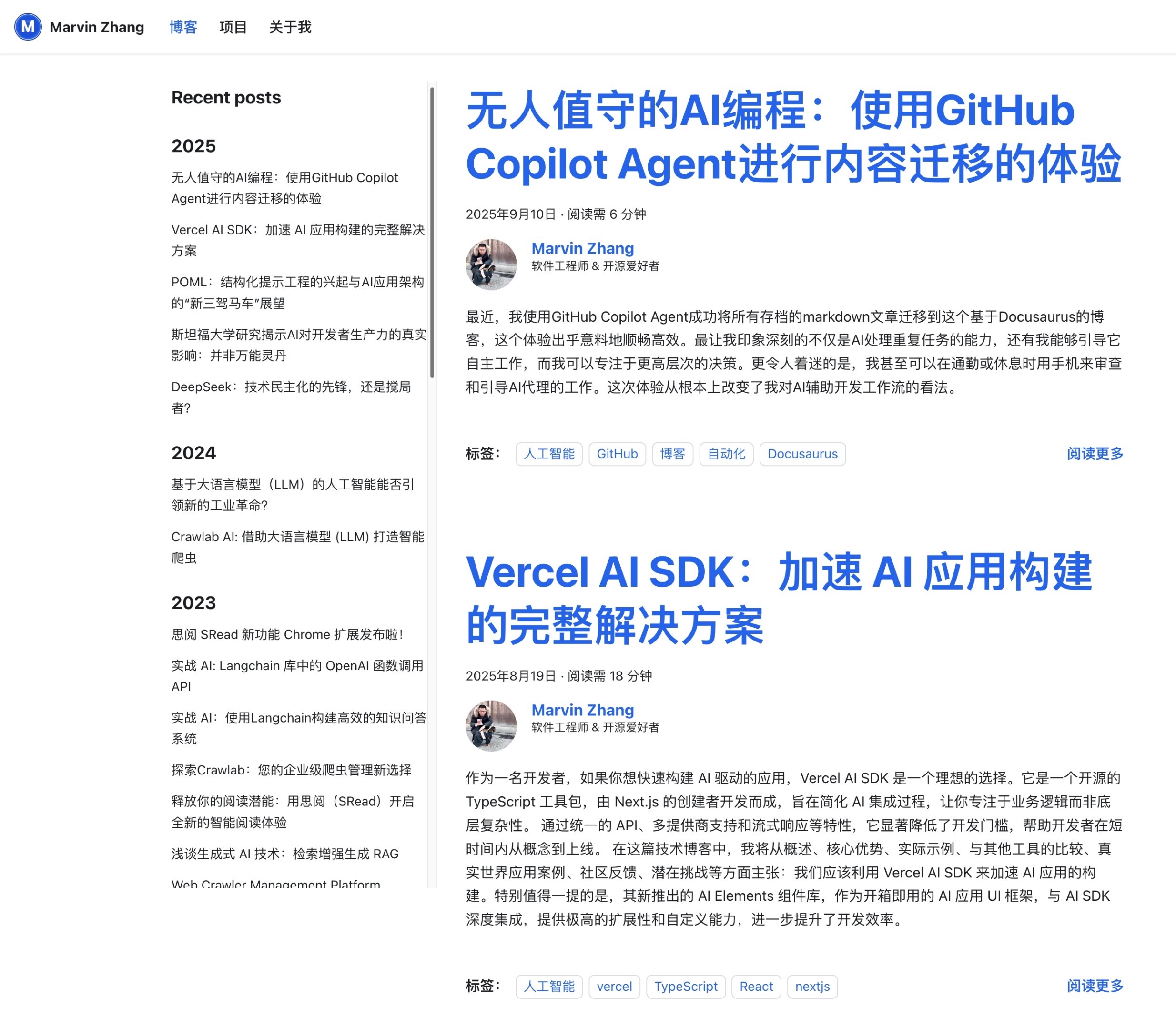 Figure 1: Migration results overview (Chinese)
Figure 1: Migration results overview (Chinese)
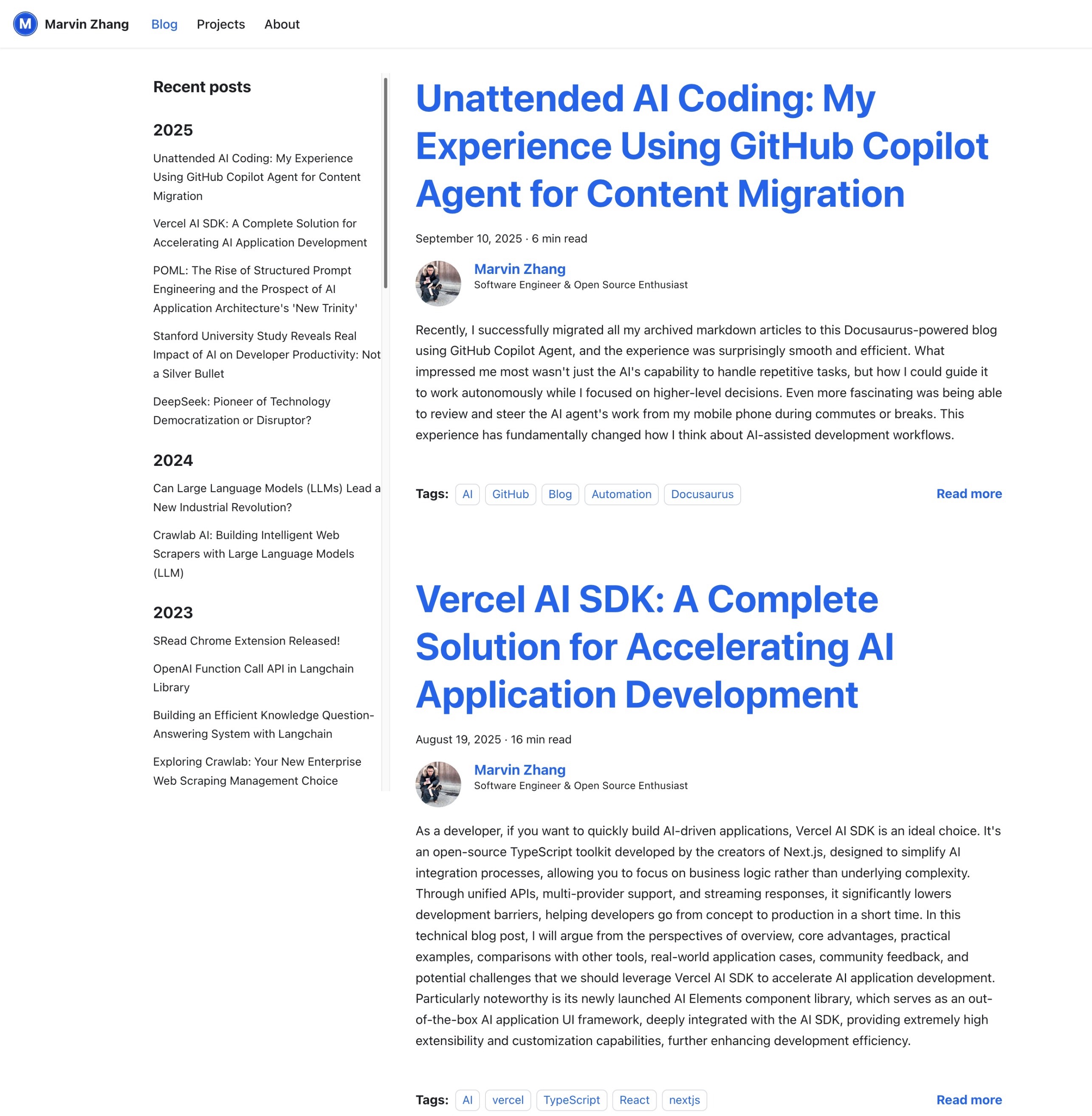 Figure 2: Migration results overview (English)
Figure 2: Migration results overview (English)
Migration Challenges
Over the years, I had accumulated dozens of technical articles scattered across different repositories and directories as markdown files. The key to migration wasn't just "copy and paste," but making each article "take root and thrive" in the new system: transforming content to match the blog framework structure, filling in necessary metadata (slug, title, authors, tags, date), and consolidating scattered image links to appropriate CDN or static resource paths.
Additionally, some of my blog posts didn't support multiple languages, so to ensure consistency, I needed to generate corresponding Chinese or English versions for untranslated articles and place them in the correct i18n directories.
If all these steps were completed manually, it would not only take several days but also be prone to omissions and format inconsistencies.
To solve this problem, I tried having GitHub Copilot Agent help me complete the migration work.
Initial Attempt
I first created the tikazyq/marvinzhang.dev GitHub repository. Then, through the GitHub Copilot Agent interface, I provided it with very simple instructions, asking it to use a mainstream blog framework to set up the initial framework.
It then created a PR, including my initial requirements and its preliminary plan.
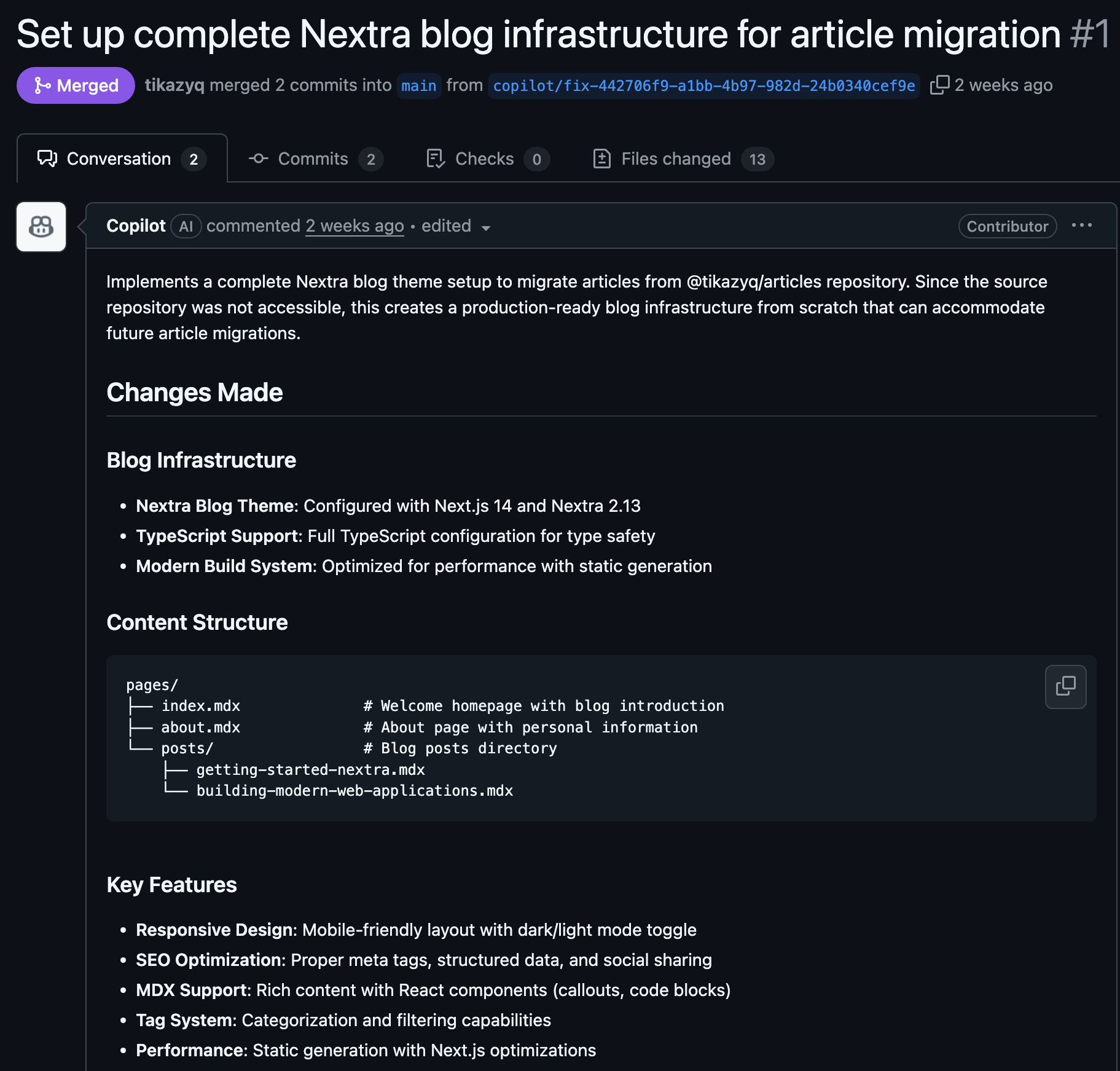 Figure 3: Initial attempt PR
Figure 3: Initial attempt PR
Then, Copilot Agent began its work and started AI Coding through GitHub Actions. The figure below shows the session where it started working:
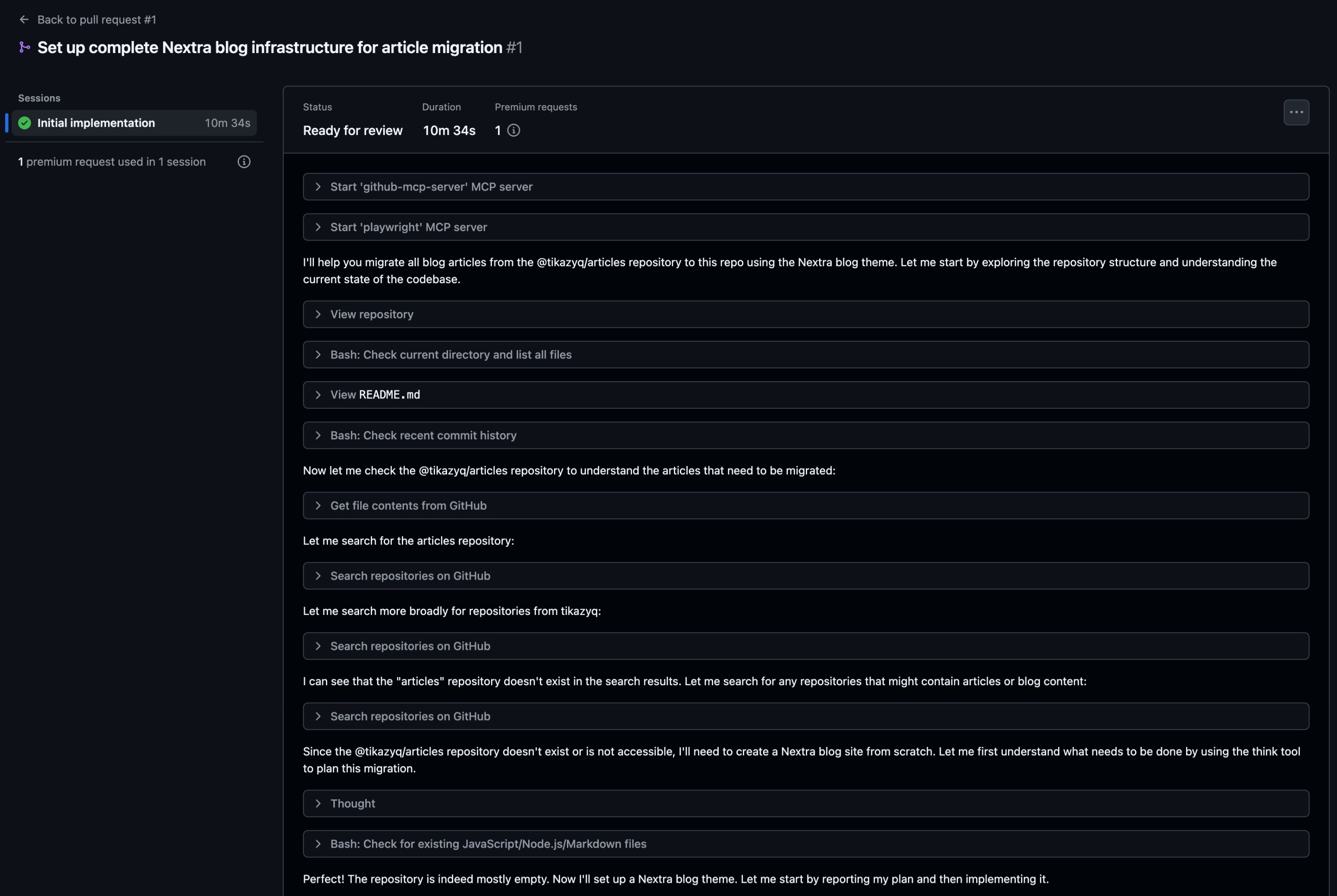 Figure 4: AI Coding Session
Figure 4: AI Coding Session
After about ten minutes, it completed all the initialization work (including setting up the environment, installing dependencies, studying the current project structure, etc.). The figure below shows its preliminary results:
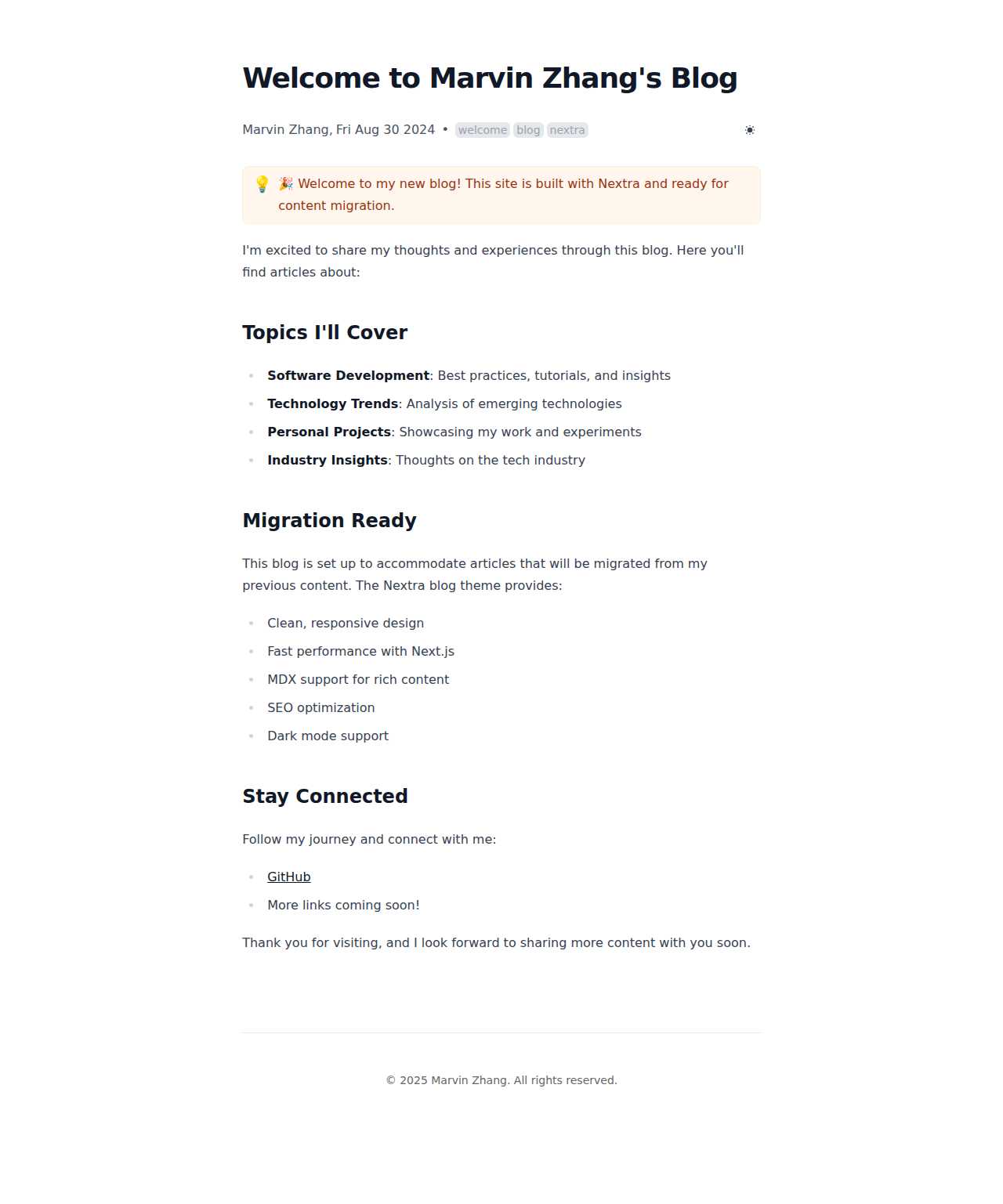 Figure 5: Basic blog interface
Figure 5: Basic blog interface
It looked good, and it also added some basic blog posts, such as the "Welcome My Blog" article. Next came migrating my markdown articles.
Starting Migration
I provided Copilot Agent with more specific instructions, asking it to migrate the markdown files from the articles directory to the blog directory.
It then used the same AI Coding workflow and began the migration work.
Of course, it wouldn't succeed on the first try. It encountered various problems in its first attempt, such as:
- Not completing migration of all articles
- Incomplete frontmatter metadata
- Image links not properly updated
- No English versions generated
Eventually, through multiple iterations, I provided it with more detailed instructions and feedback, helping it gradually improve the migration script. Each time it would create a new PR, which I could review and provide feedback through GitHub's interface.
Here's a list of all 8 PRs:
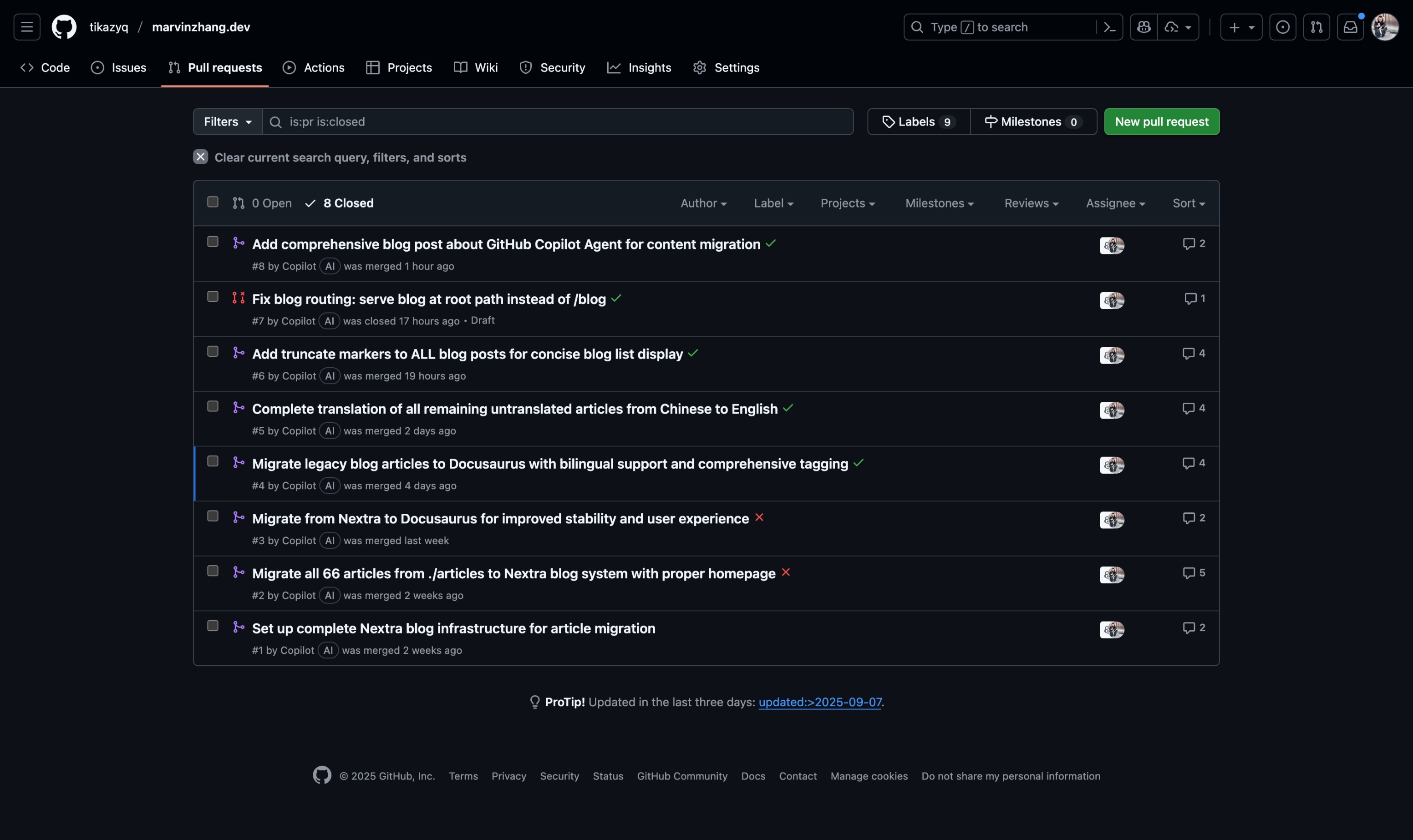 Figure 6: Copilot Agent PR list
Figure 6: Copilot Agent PR list
There was a small episode where I discovered that the Nextra framework itself was too new, so many APIs and documentation were incomplete, causing Copilot Agent to be unable to correctly understand and use them. So I decided to switch to Docusaurus, a more mature blog framework.
Mobile Review
The pace of mobile review was more aligned with "fragmented time": when there's a new PR, I receive a notification on my phone, first glance at the change summary, then quickly review key differences, and directly comment inline where adjustments are needed. Complex opinions are more naturally expressed using voice-to-text, and after processing, I can approve with one click. Even when not at my workstation, migration doesn't stop.
When Copilot Agent completes its work, it sends email notifications. Then I can review its changes in the PR interface and provide feedback. Often it thoughtfully summarizes its changes and includes screenshots for quick understanding.
If I'm not satisfied or think there are areas that need adjustment, I can directly add comments inline through the @ function, and Copilot Agent will receive notifications and make corresponding modifications.
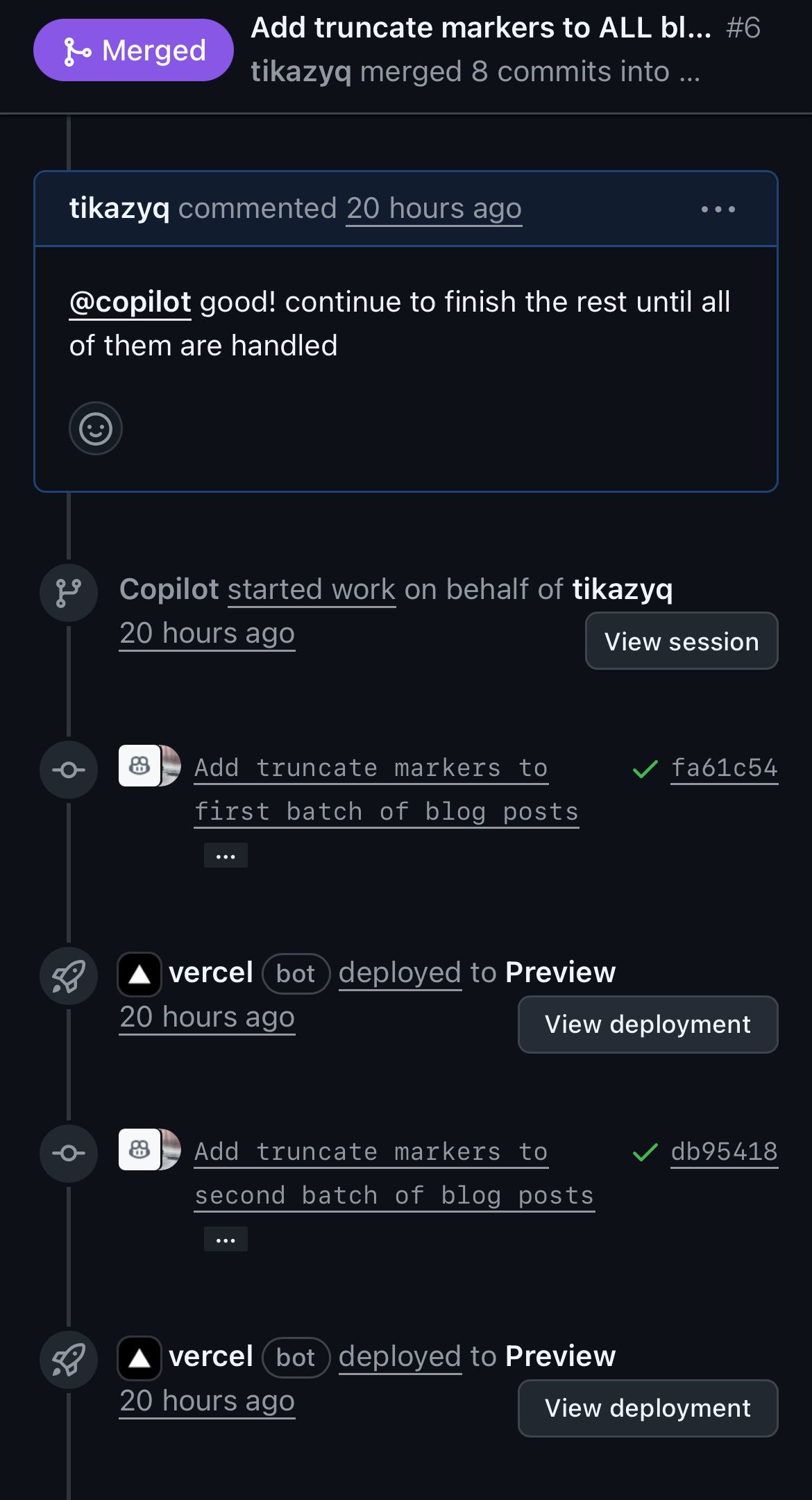 Figure 7: Mobile review interface, allowing quick review and feedback on phone
Figure 7: Mobile review interface, allowing quick review and feedback on phone
Final Product
After 8 rounds of PR refinement, the entire migration work was finally completed successfully. Looking back, the AI agent indeed exceeded my expectations.
What satisfied me most was that the blog now supports bilingual Chinese-English switching, and all 50+ articles previously scattered everywhere now have a unified "new home." The format, tags, and author information of each article are organized neatly, and image links have all been migrated to stable CDN. More importantly, for articles that previously only had Chinese or English versions, AI helped me complete versions in the other language.
Technically, choosing Docusaurus as the framework was indeed the right decision. Its internationalization support is very mature, and the entire deployment process (through Vercel) has become exceptionally simple. Every time I push code, the website automatically updates—no more manual server maintenance.
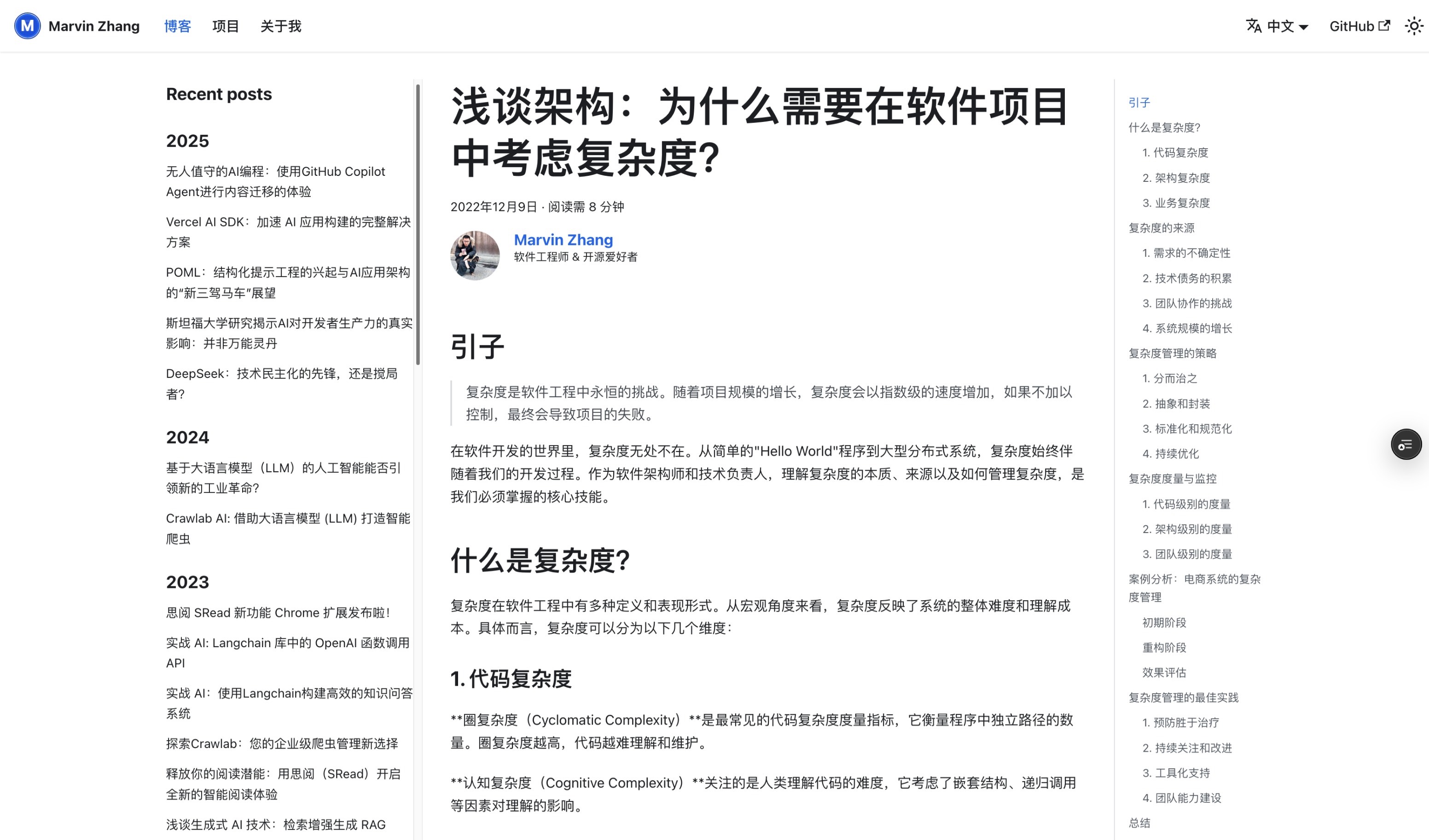 Figure 8: Final blog effect (Chinese)
Figure 8: Final blog effect (Chinese)
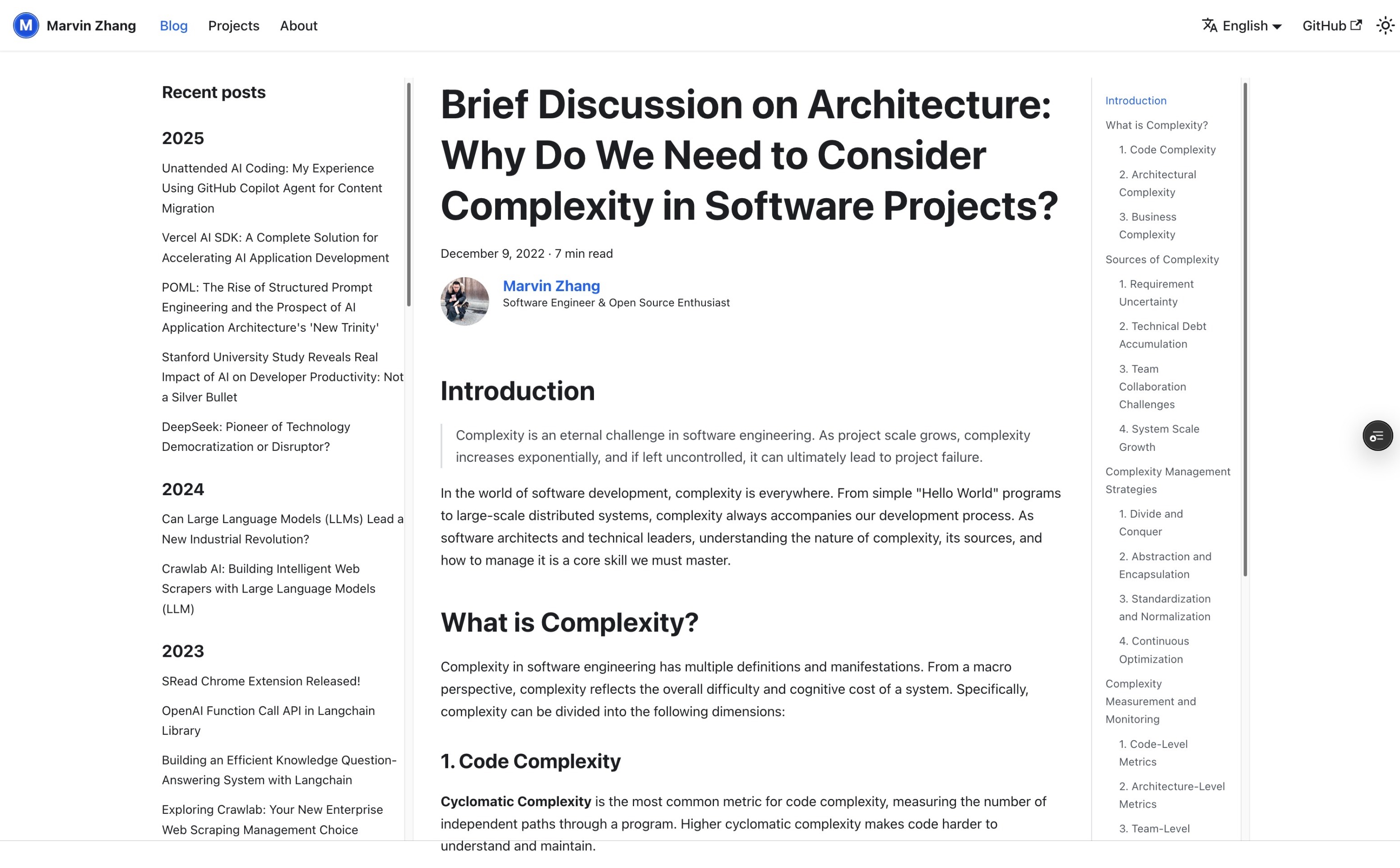 Figure 9: Final blog effect (English)
Figure 9: Final blog effect (English)
Honestly, if I had to complete all this work manually by myself, it would probably take several weeks, and I might have given up halfway. But with AI agent assistance, the entire process became much more manageable. I only needed to provide directional guidance at key points, and it could handle all the detailed work on its own.
How to Use GitHub Copilot Agent
Although GitHub Copilot Agent is very powerful, it's not free. For individuals to use Copilot Agent, you need to upgrade your Copilot subscription plan to GitHub Copilot Pro ($10 USD per month) or GitHub Copilot Pro+ ($39 USD per month).
Here's a comparison table of different GitHub Copilot subscriptions.
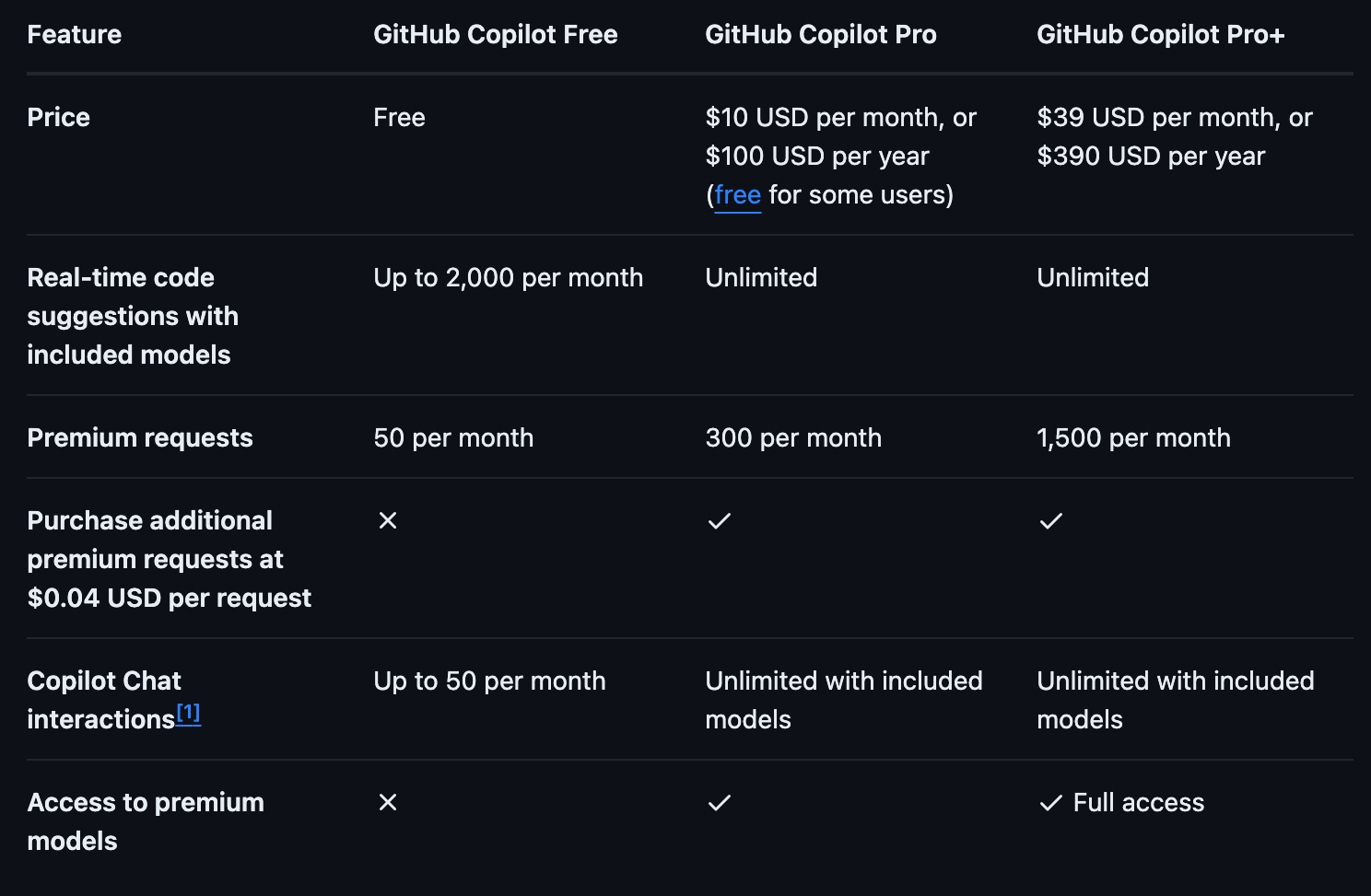 Figure 10: GitHub Copilot subscription overview
Figure 10: GitHub Copilot subscription overview
Conclusion
This content migration experience highlighted the core advantages of AI agents: they are particularly suited for "clear pattern, well-defined rules" repetitive tasks, can maintain consistency in large-scale work within well-constrained structures, and can autonomously advance under periodic human guidance.
The mobile review capability was particularly eye-opening, suggesting that developers can manage and guide AI assistants from anywhere in the future, breaking free from traditional desktop development workflow limitations. Using GitHub Copilot Agent for content migration proved that AI assistants are most valuable when they can autonomously handle clearly defined tasks while remaining responsive to human guidance.
The key insight is that modern AI agents don't just automate individual tasks—they can orchestrate entire workflows while keeping humans involved in quality assurance and strategic decisions. This represents a significant evolution in how we leverage AI for development work, moving from tool assistance to workflow partnership.
As AI agents become more sophisticated, I look forward to seeing more developers adopt these unattended but supervised approaches for various repetitive tasks, from code refactoring to documentation updates to deployment automation. The future of development isn't about AI replacing developers, but about AI enabling developers to work more strategically while autonomously handling repetitive heavy lifting.
